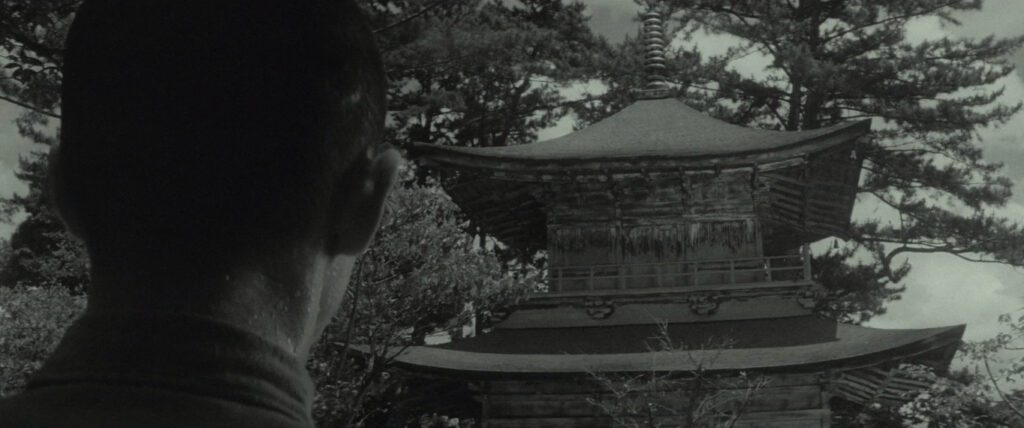
Conflagration
1958, directed by Kon Ichikawa
Each of the three half-hour marks in Conflagration, within a precision of a few seconds, falls on a key inflection point. At 30 minutes, a tour bus unloads a group of American soldiers at the temple, signalling a leap forward in time and telling us World War II is over. At 60 minutes, the head priest finishes narrating the kōan about Nanquan and the cat. And at 90 minutes, Goichi lights the flame that will consume Shukaku Pavilion. The third of these marks the act of destruction that gives the movie its title. The first, the cut leading to the bus of soldiers, elides another conflagration, in a way the most terrible moment of destruction in history, the atomic bombs on Hiroshima and Nagasaki. And the second, the Buddhist parable, points to the heart of the movie, guiding us toward understanding these acts of destruction.
Conflagration revolves around the burning of the temple, but that is only one of several destructive acts the movie portrays. Goichi defaces a naval cadet’s precious sword; a well-built house in Kyoto is demolished; Goichi pushes a pregnant woman down the temple steps causing her to miscarry; Togari’s ikebana teacher smashes a vase of flowers on his floor; and at the end Goichi commits suicide by leaping off a train. Except for pushing the pregnant woman, each of these is willfully destructive because the persons committing the acts are keenly aware of the objects’ value, and in the case of the pavilion, no one has greater reverence for it than Goichi himself.
The parable of Nanquan and the cat is also about an act of destruction. Monks from the east and west halls are fighting over custody of a stray kitten, and Nanquan resolves the conflict by beheading the cat. Soon afterward Nanquan’s disciple and successor Zhaozhou returns, learns what happened, and walks away with his sandals on his head. Nanquan tells Zhaozhou, “If only you had been here the cat would still be alive.” The head priest says this is one of the hardest kōans to understand, and that it has two lessons, but we never hear him elaborate any further. Instead the movie itself clarifies and interprets the kōan, drawing out its lessons through living examples.
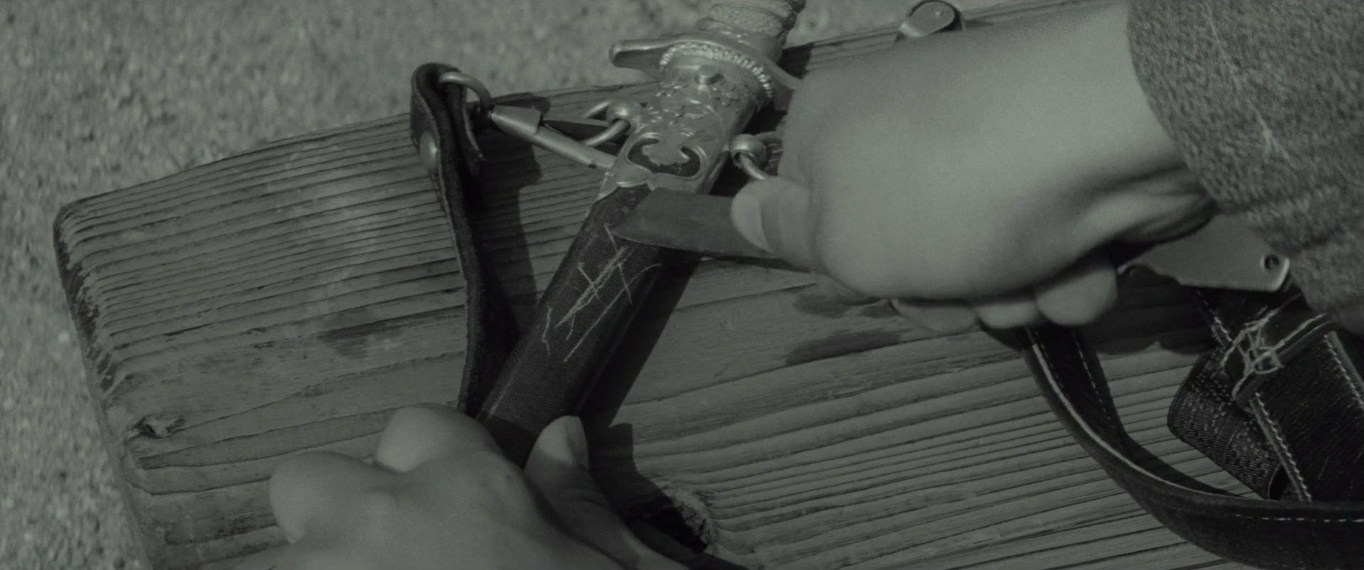
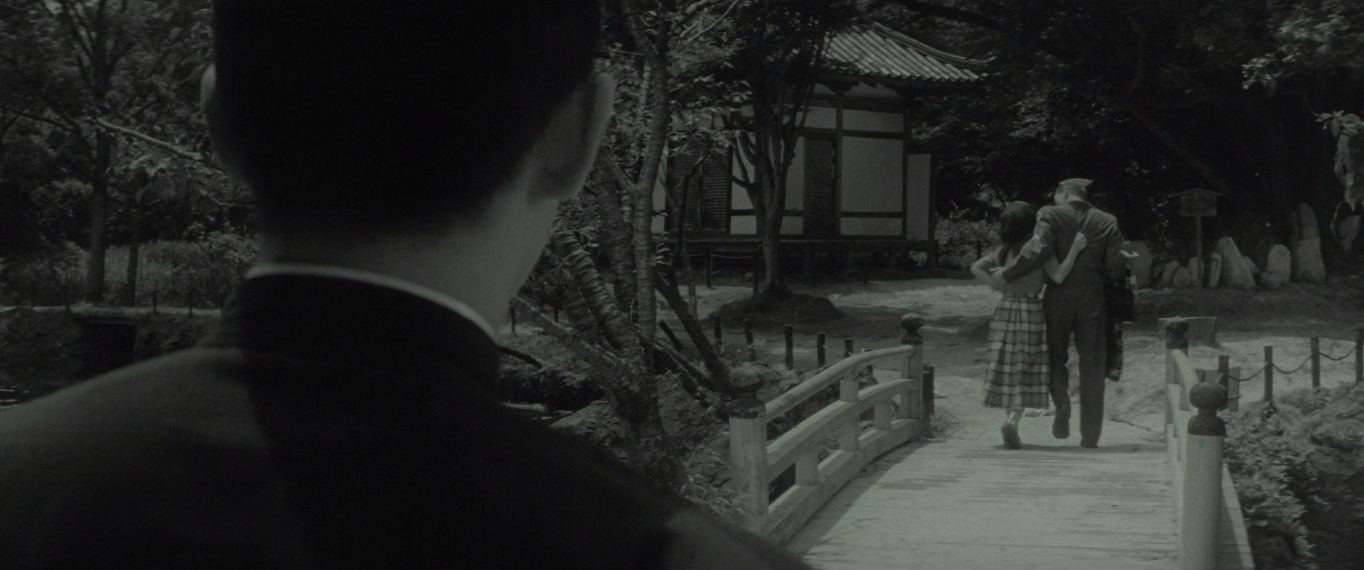
The first lesson is the simpler one. The allure of destruction is that it can break a deadlock by shocking conflicting parties into a new frame of mind, making their differences look trivial. After Nanquan kills the cat, the monks’ dispute subsides. After Goichi knocks down the pregnant woman, she walks away in her American lover’s arms as if they hadn’t just been quarrelling. When Goichi scratches the sword after being bullied, or when the ikebana teacher smashes the vase after being rejected, neither expects the act to solve the conflict, but in each case it should deflect from something emotionally unbearable. History is full of examples: Hitler rallied the German nation to his cause by burning the Reichstag, and the September 11 attacks momentarily smoothed out stark political divisions in the United States. Acts of destruction are usually worse than the conflicts they mollify, but they tend to appeal to persons who are either desperate or cynical.
Goichi has no shortage of motives to burn Shukaku Pavilion. He’s humiliated and rejected by the head priest, the deputy, and his own mother. He’s also bothered that no one else feels a similar reverence for the holy pavilion, finding the monks at Soen Temple disappointingly unspiritual. His friend Togari encourages him to test the head priest’s goodwill, enkindling a spirit of rebellion against his master. The idea of arson seems to arise when Goichi visits his home temple and relives his father’s cremation. Cremation is also an act of destruction, safely ritualized but with a similar purpose – to placate the unbearable turmoil of grief. Goichi had inherited his love for Shukaku from his father, and burning the temple, he thinks, will deliver the shock that can change his enemies and put his inner conflict to rest. He’s partly correct, if the rumors at the train station are accurate: his mother kills herself, and the head priest reforms, not that it does Goichi any good. But when the police bring Goichi back to the temple and he sees his beloved Shukaku reduced to charcoal, it shocks him too and precipitates his successful suicide attempt.
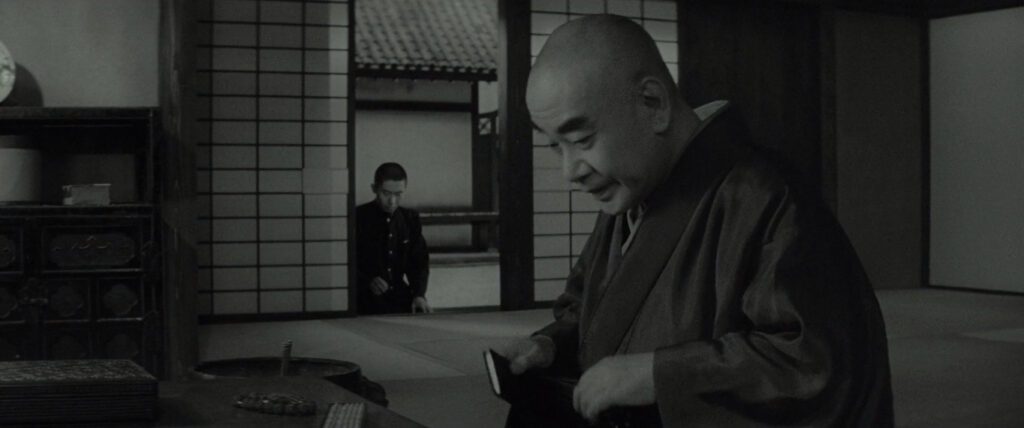
In this light, we can see that destructiveness is often a misguided assertion of humanity. In a perverse way, the destructive person feels that the act will increase harmony and benefit society. Goichi feels he’s teaching the monks a lesson just as Nanquan felt he was instructing the monks under him by killing the cat. When Zhaozhou, an experienced monk who had already achieved Enlightenment, hears of it he puts his sandals on his head, a kind of silent reproach that mimics the perversity of cutting up a cat to teach students a lesson. Wearing sandals on the head turns the proper order of dress upside-down, as Goichi likewise realizes the full horror of what he’s done only after seeing a ghostly vision of Shukaku reflected upside-down in the pond.
When Nanquan tells Zhaozhou the cat would still be alive if he had been there, the teacher is not reproaching his disciple but acknowledging his superior understanding of Buddhist teachings – and herein lies the parable’s second lesson. Destructiveness is both caused by, and is itself, a failure of understanding. Before starting the fire Goichi holds out one last hope. He meets Master Zenkai, a visiting priest who knew his father. He begs Zenkai to look into his heart and understand him, but the priest laughs and says it would be better not to. Goichi then runs out to the pond and, gazing at Shukaku, laments that “Nobody understands me!”
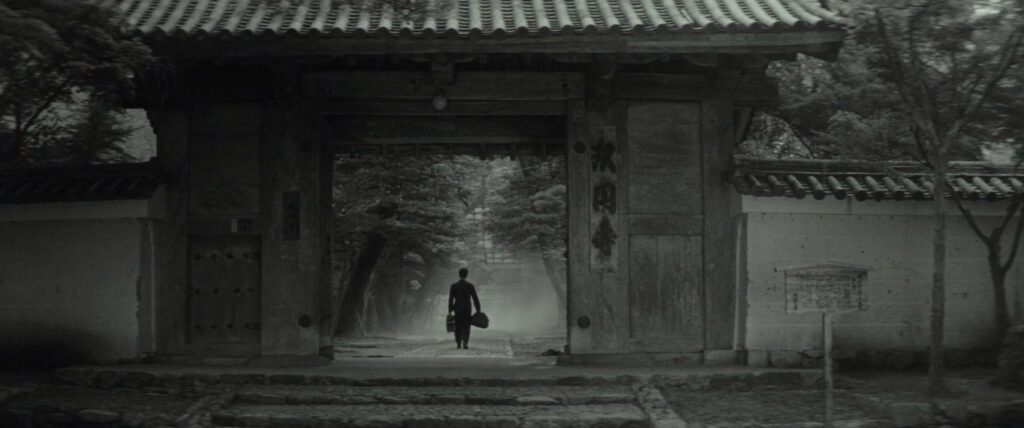
Goichi may be right that nobody understands him, but he misses the flip side – he too fails to understand people. The head priest had noted this when Goichi burst in on him after being caught inserting an accusatory pin-up of a geisha into the head priest’s newspaper. The priest tells Goichi his greatest handicap is not his stutter, but his twisted view of people. “You may know me,” the priest says, “but you don’t understand me.” Goichi only sees his master’s faults, how he commercializes the temple and consorts with a geisha, but he doesn’t see the humanity and the potential within; after all the priest does show a conscience sometimes, and he tells his deputy he wants to resign because of his sins. In a similar way Goichi rejects his mother after discovering her affair with his uncle. Instead of trying to understand her, he rushes to judgment, and the relationship is forever soured.
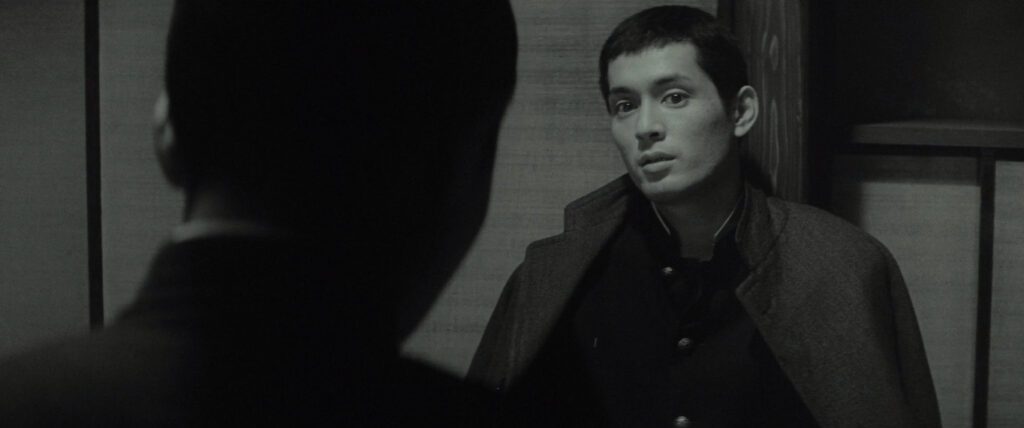
With regard to understanding, Togari is a foil to Goichi. He tells the young monk that his bad leg gives him time to observe people while others are out having fun, and his conversation abounds with psychological insights. Unlike Goichi he’s hard, manipulative, and cynical, but he never shows an urge to destroy. Each of them has a prominent handicap, but their respective inner qualities explain their friendship better – between Goichi’s humility and Togari’s capacity for understanding, together they form a more complete human being.
As much as Togari understands people, one misunderstanding comes between the two friends: Goichi says Togari does not understand the true nature of Shukaku Pavilion. However, Goichi’s defense of Shukaku makes plain that he inflates the structure into something more than it is. He speaks of it as something eternal and unchanging, burdening it with impossible expectations. His sense of wonder may sound admirable, but genuine wonder does not glamorize its object – it comes from looking at things as they are and marvelling at their reality. Goichi elevates the temple above life itself, and even the death of an unborn baby at his hands doesn’t alter his thinking. The other monks all recognize that he is wrong to protect the building’s purity at such a high cost. His attitude toward Shukaku is a kind of idolatry, and it mirrors the way people inflate artworks into sacred objects without appreciating the subjects they strive to express. Again it’s an upside-down view of things, and it should be no surprise that someone like Goichi would be the end of Shukaku Pavilion.
CONNECTIONS:
Vivre sa vie – Perversity of putting art on a pedestal at the expense of its subject
The Sacrifice – Protagonist sets fire to the place he loves most